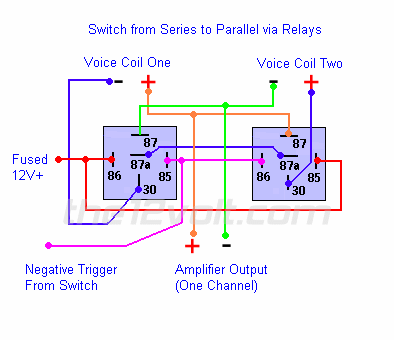hi guys,
i'll make this as straight forward for you guys as i possibly can.
i have this amp :
https://www.pioneer.co.uk/uk/products/archive/GM-7200M/index.html
which is a mono amp, has 1 x 360w @ 2 ohms / 1 x 250w rms @ 4 ohms, is 2 - 8 ohm load capable.
and i have 2 of these subs :
https://manuals.harman.com/JBL/CAR/Owner's%20Manual/om_gto1014_1014d_1214_1214d_1514_1514d_english.pdf
jbl gto 1014 subwoofer , 10" 350w rms , 4ohm nominal impedance.
i have already looked at the wiring options for the subs on here, and it tells me i can wire them in series
or in parallel. thing is, i dont exactly know which option i should choose. im looking at giving the subs the best power
they can get from the amp without trying to burn things up.
i like clean undistorted bass with good snap and attack and ive built a sealed enclosure for these subs.
any help and explaination as to why which option is better is much appreciated.
thanks,
dave.
-------------
live by the ford,die by the ford.
forgot to add that these subs are single voice coiled ( svc subs )
-------------
live by the ford,die by the ford.
can anyone help me out on this ?
-------------
live by the ford,die by the ford.
Personally, I would wire the subs in parallel since they're single voicecoil. You can always wire them either way(series or parallel) to see what sounds best to you though.
wire them parallel. The amp will most likely heat up and prolly won't push them very hard be careful not to go into clipping read the gain setting sticky. Ive had experience with this amp before and was not pleased at all. Save up some cash and upgrade as soon as possible to a better mono channel. You'll be much happier
That is a choice that you will have to make. If you can not decide which way you like it, you could always use the following and be able to switch between a parallel and a series setup.
| Switching from Series to Parallel and Back |
When the relays are at rest (normally closed position) the woofer coils are wired in series. When ground is applied to each coil (energizing the relay coils), the voice coils are wired in parallel. With 2 four ohm voice coils you'll have an 8 ohm load at rest and a 2 ohm load when the relay coils are energized.
For each dual voice coil woofer that you want to change from series to parallel, you'll need two relays for each. They can all be controlled from the same switch.
 |
guys, thanks for very much for replying.
i was thinking of wiring them in parallel alright.
im not a volume whore, so rattling my car wont matter to me, as long as the bass blends into the music with sufficient detail
and clarity i'll be more than happy. i just want to add a bit of presence to the music as the components are running at 120 hpf and get " tinny " with no bass present.
if i wire in parallel, it means my amp will kick at 2ohm. if i wire in series, my amp will kick at 8 ohm.
and this is what is questioning me the most. all ( most ) home hi-fi systems run at 8ohm and they sound beautiful, right from the low end to the twinkly highs. its this full bodied sound i want to capture. my only concern is how much watts rms my amp produces running in 8ohm. if 2ohm gives me 360 rms, 4 ohm gives me 250 rms, then by logic if its running near 8 ohm wouldnt that lower the figure to around 140/150 rms. thats very little.
the box is nearly finished ( atm im glassing the inside joints for strength and air tightness ) so i should have it up and running by monday at least. im pretty busy with projects atm but i'll click back here and let you know how i got on :)
thanks once again guys !!!
-------------
live by the ford,die by the ford.
The reason that car equipment runs at 1 2 or 4 ohms is the fact that there is only 13.8 volts to power your amplifier. A home amp has 110 volts to play with. Power is directly related to Voltage and Current. A home amp has plenty of voltage to make it's power. A car amp makes it's power via the extra current from the lower impedance speaker.
I know that a car amplifier is capable of producing the same rail voltage as a home amplifier, the problem with that is the amount of current drain on the electrical system of the vehicle to produce the voltage.
